Common Name(s): Amaranth, Callaloo, Jamaican Callaloo
Latin Name: Amaranthus spp.
Plant Family: Amaranthaceae
Size: 18”
Edible: Yes
Medicinal: No
Where Found: Disturbed ground, roadsides, construction sites, gardens
Flowering Time: Year-round
Fruit: Edible seeds
Native: Unknown
Uses: Edible Greens, Grain
Amaranth Identification and Description
Amaranth is an easy to identify relative of spinach (Spinacia oleracea).
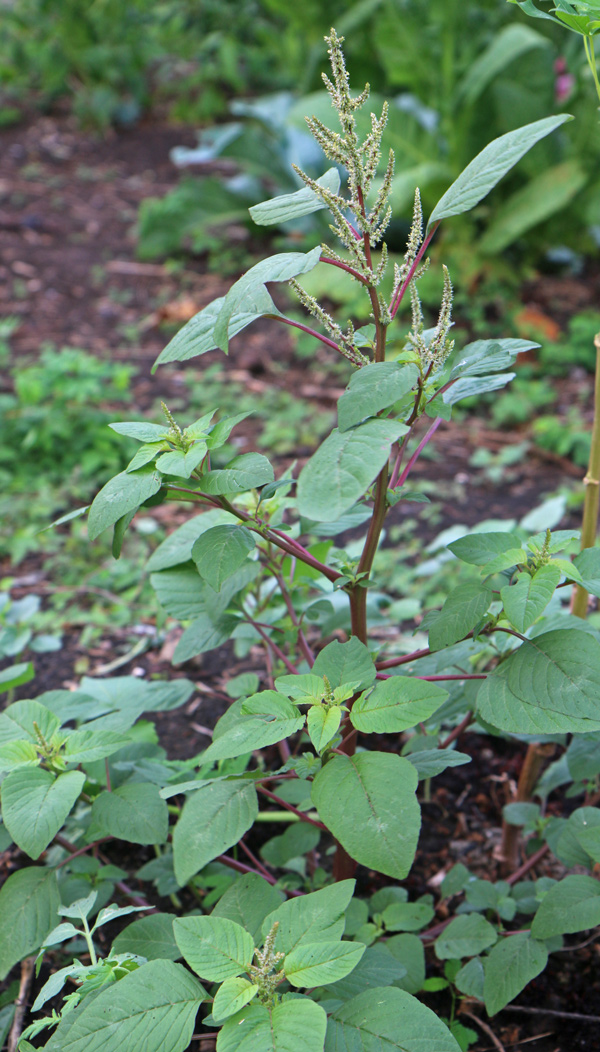
Its leaves are edible raw or cooked, though raw leaves can cause a scratchy sensation in the throat due to the presence of oxalic acid. There are many cultivated forms of amaranth, including varieties grown for their leaves and others grown for their seeds. The leaves vary from solid green to green and red, and even solid red, purple and yellow in cultivated forms.
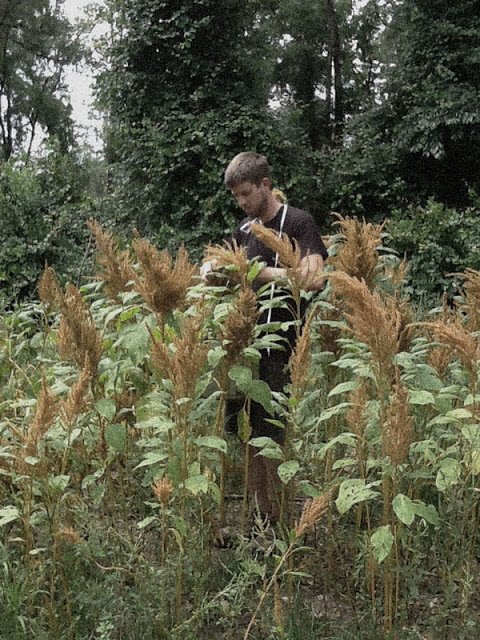
A cultivated form of amaranth
The seed, though not a true grain, can be used as such, though wild forms of amaranth aren’t worth the trouble since their seed heads are small.
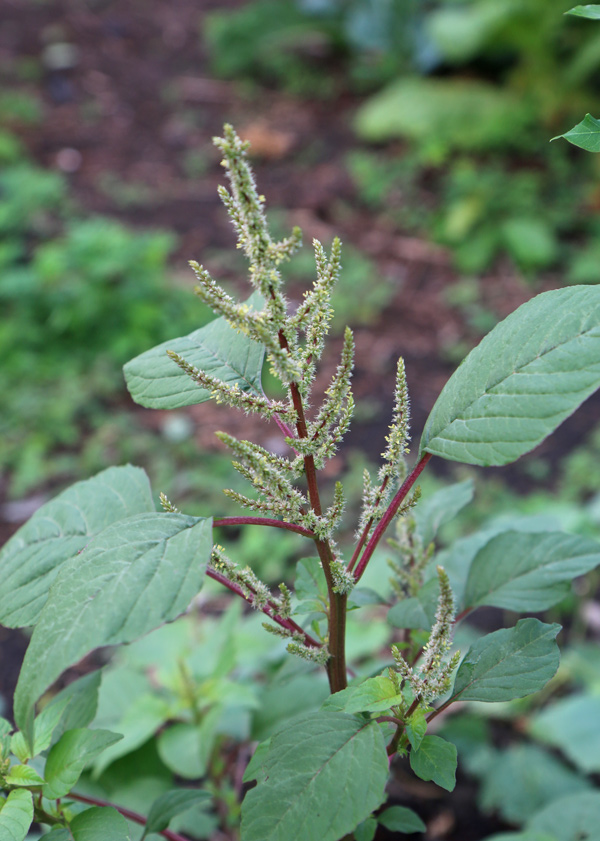
The seed head of a wild form of amaranth
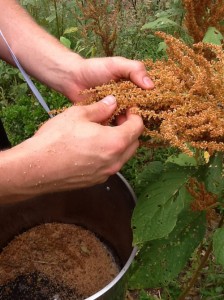
A cultivated grain-type of amaranth
Cooked greens have a pleasant texture and excellent flavor. They are very good in stir-fries and with scrambled eggs. Or as a steamed side-dish. Young stems and all the greens can be eaten. The greens are nutritious and high in iron. In the Caribbean they are often recommended to mothers recovering from childbirth.
Propagation and Culture
Amaranth grows quickly with the arrival of the rainy season and will produce edible greens within a month of germination.
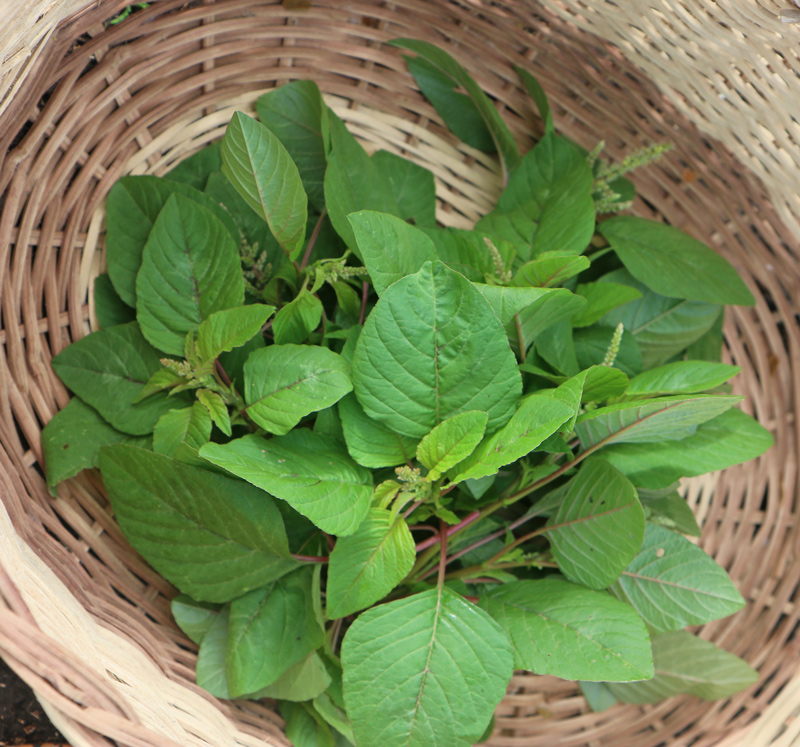
Improved varieties are as easy to grow as their weedy relatives though seed is not common in stores. Amaranth is a prolific self-seeder and will readily return in the garden, especially if the soil is disturbed.
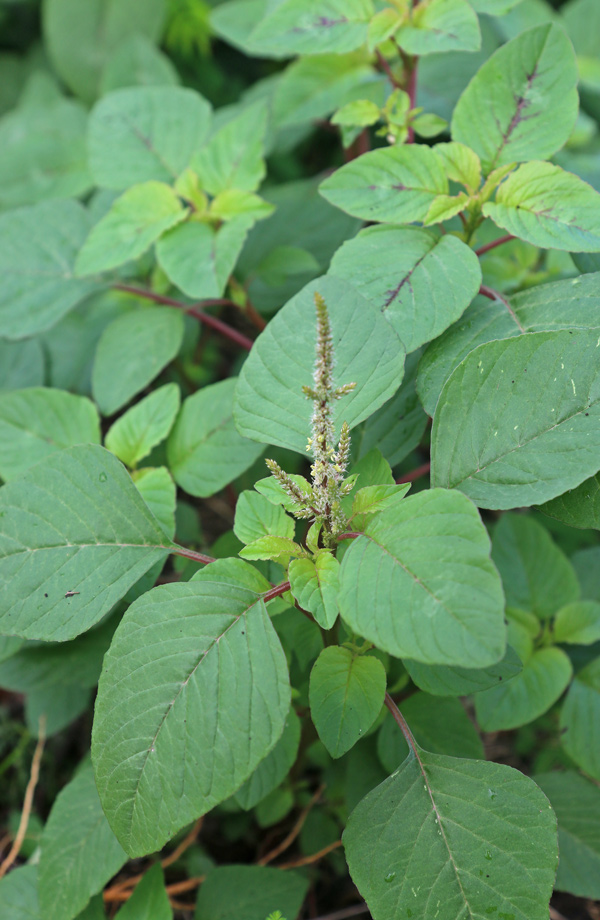
If a gardener does not want a bunch of amaranth volunteers in the following year’s gardens, he should remove the seed heads before maturity. Cutting back amaranth plants will stimulate new leaf production and the plants can be harvested multiple times during the season. Wild amaranth is a common “weed” in gardens when the the soil is broken and is often harvested as a potherb by gardeners when not grown as a main crop.

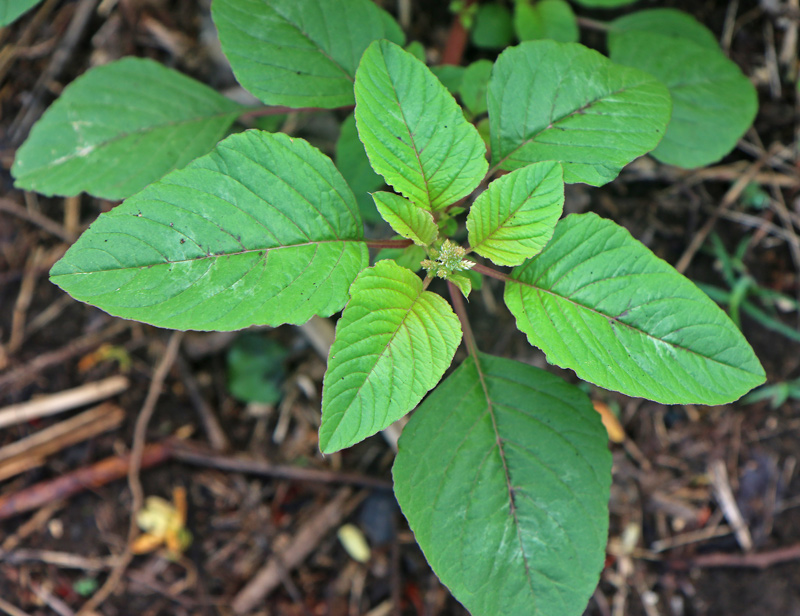
5 comments
Another relative of spinach that is also considered a *weed* here in the U.S. but cultivated in India as a staple crop is lamb’s quarters. Since discovering its nutritional value, I’ve been amassing them in the spring wherever I find them while weeding in a CSA [communitiy supported agriculture in mid-Michigan] and eating them almost daily [eat for free while we can] – substituting them for whatever greens a recipe calls for. Spinach is harder to grow and this grows freely without care and with abandon!
Good work. I have done the same. We had tons of Bidens alba in our yard and gardens back in Florida. I ate it all the time. And chickweed in winter. Sometimes I wonder why I bothered growing “proper” greens.
Wish I could send the photo to see if I have any warrants or not. The leaves on this one looks so delicious but I’m afraid of getting poisoned because where they class looks different than in your picture. Now I wish I hadn’t yanked it. It’s wilting instantly.
I am so excited to learn about more herbs and vegetables .
I am so excited to learn about more herbs and vegetables that grow in the wild
Comments are closed.